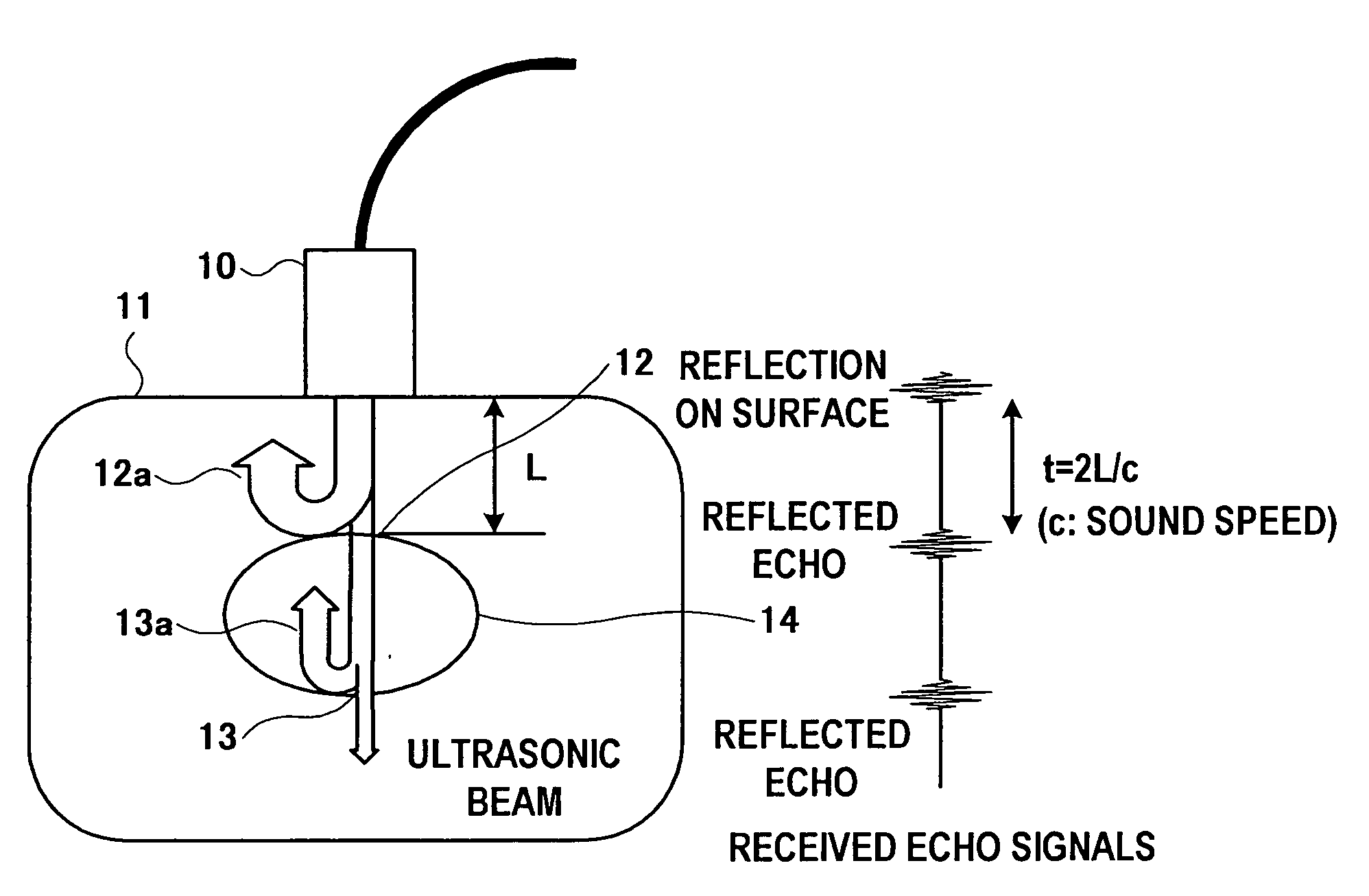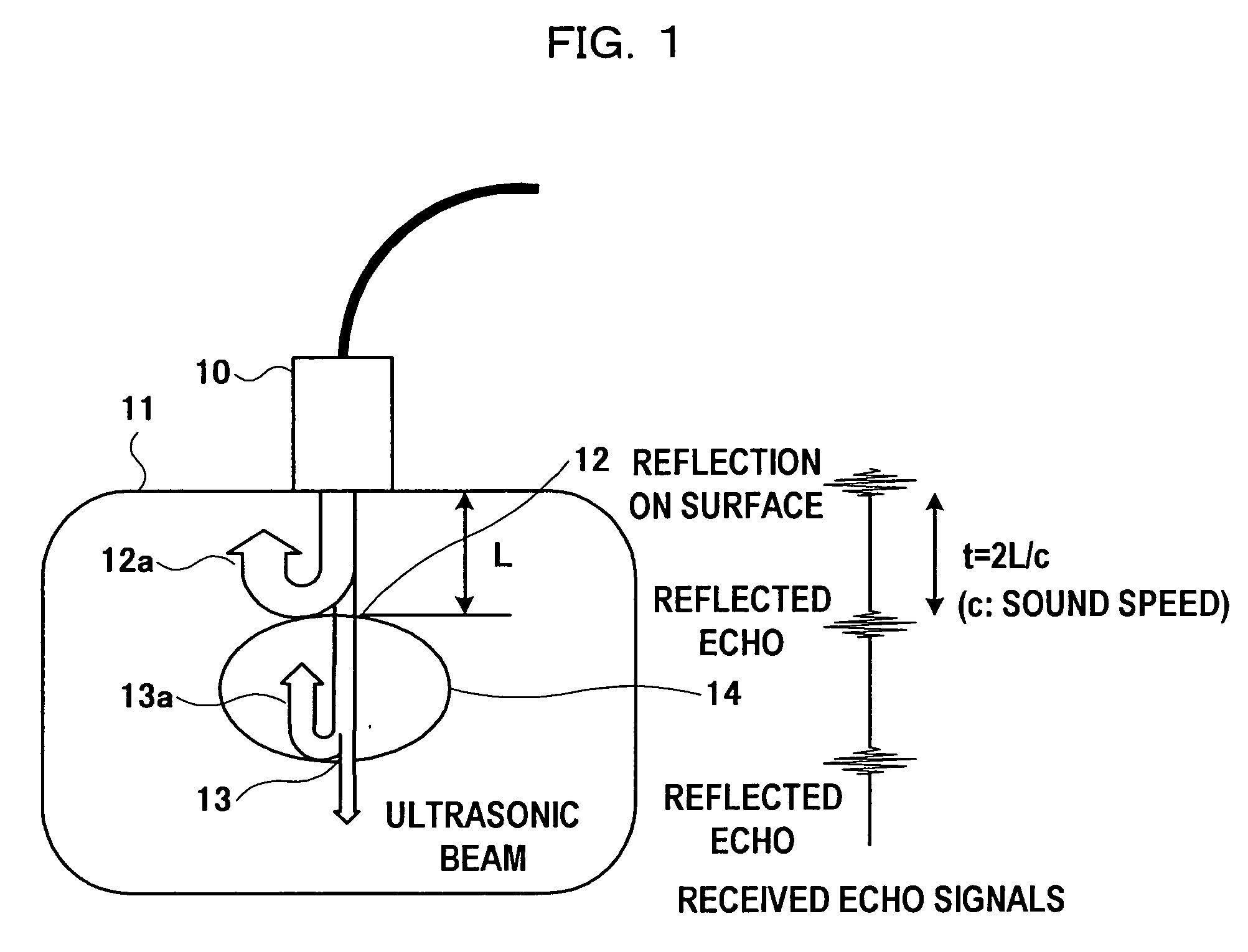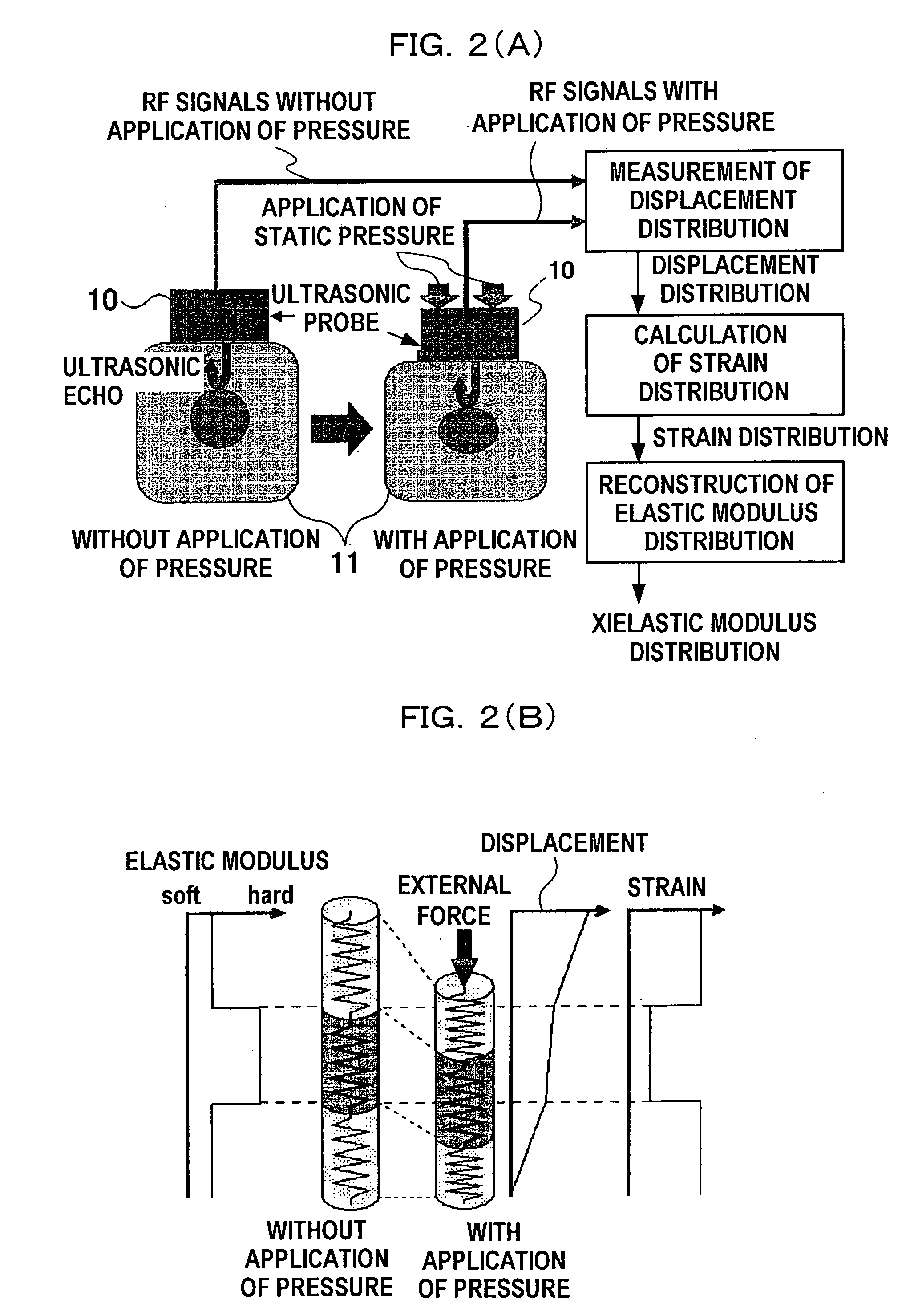[0008] As descried above, with the ultrasonic diagnosis
system according to the present invention, the displacement of each measurement point is calculated based upon the correlation between the properties such as the envelope signals with and without application of pressure, thereby enabling real-
time estimation of the displacement distribution. Furthermore, with the ultrasonic diagnosis system according to the present invention, the position of each measurement point may be obtained so as to exhibit the maximum correlation coefficient between the envelope signals with and without application of pressure for the measurement points by varying said measurement points in said
ultrasonic beam direction at a
pitch half the
wavelength of said ultrasonic signals, thereby solving a problem of
aliasing which is the
disadvantage in the Doppler method.
[0010] Accordingly, with the ultrasonic diagnosis system according to the present invention, first, the autocorrelation functions of the envelope signals with and without application of pressure are preferably calculated. Then, the correlation coefficient is obtained by varying the
phase difference between the autocorrelation functions thus obtained corresponding to the predetermined variation of the measurement points, e.g., by varying the phase difference thereof at a
pitch half the
wavelength of the ultrasonic signals. This reduces calculation time for displacement computation, thereby enabling high-speed
processing Furthermore, the ultrasonic diagnosis system according to the present invention may further include: storage means for storing the envelope signals of the quadrature-detected RF signals; correlation computing means for calculating the position of each measurement point which exhibits the maximum correlation coefficient between the envelope signals with and without application of pressure for the measurement points surrounded by a two-dimensional correlation window; and displacement computing means for obtaining at least two-dimensional displacement of each measurement point due to application of pressure based upon the position of each measurement point which exhibits the correlation coefficient and the phase difference thus obtained by the correlation computing means.
[0011] That is to say, the method which is referred to as “Combined Autocorrelation method (CA method)” is proposed in the present specification. As described above, the Combined Autocorrelation method has the advantages of two-dimensional and three-dimensional displacement measurement in the
spatial correlation method with a correlation window, and the
advantage of real-time and high-precision calculation in the Doppler method. The Combined Autocorrelation method allows the user to estimate the displacement distribution regardless of the displacement in the horizontal direction to a certain degree. In this case, the two-dimensional directions may comprise the ultrasonic-
beam direction where the ultrasonic signals are received with the ultrasonic probe and the ultrasonic-
beam scanning direction. Furthermore, with the ultrasonic diagnosis system according to the present invention, the position of each measurement point which exhibits the maximum correlation coefficient is preferably obtained by varying the measurement points in the ultrasonic-
beam direction at a
pitch of half the
wavelength of the ultrasonic signals, and in the ultrasonic-
beam scanning direction at the ultrasonic-beam pitch. Note that while the pitch at which the measurement points are varied in the ultrasonic-
beam direction according to the present invention is not restricted to half of the wavelength of the ultrasonic signals, a pitch smaller than half of the wavelength of the ultrasonic signals is preferably employed.
[0015] As described above, calculation according to the present invention is made on the assumption that the tissue exhibits isotropic elasticity. The reason is that the relation between the stress and strain exhibits near-
linearity under static
external pressure applied to the tissue. Accordingly, approximate calculation can be made on the assumption that the tissue serves as an elastic model. In addition, the tissue exhibits isotropic properties, and accordingly, calculation according to the present invention may be made on the assumption that the tissue serves as an isotropic elastic model. On the other hand, with the present invention, calculation is made on the assumption that the tissue exhibits near-incompressibility. The reason is that if calculation is made on the assumption that the tissue exhibits the complete incompressibility, i.e., calculation is made with the constant Poisson's ratio of 0.5 within the tissue, the elastic equation becomes a special case, leading to a problem that calculation cannot be made using the
finite element method. Note that with the present invention, calculation may be made with a uniform Poisson's ratio within the tissue. In this case, only the Young's modulus should be estimated for
estimation of the
elastic modulus distribution, thereby reducing the inverse problem. Note that the Poisson's ratio exhibits sufficient uniformity within the tissue, and accordingly, with the present invention, calculation is preferably made with the Poisson's ratio of 0.49. The
elastic modulus distribution computation according to the present invention enables reconstruction of the
elastic modulus distribution based upon the strain distribution in the axial direction alone which can be computed with high precision, thereby enabling stable computation of the elastic modulus distribution.
 Login to View More
Login to View More  Login to View More
Login to View More 


